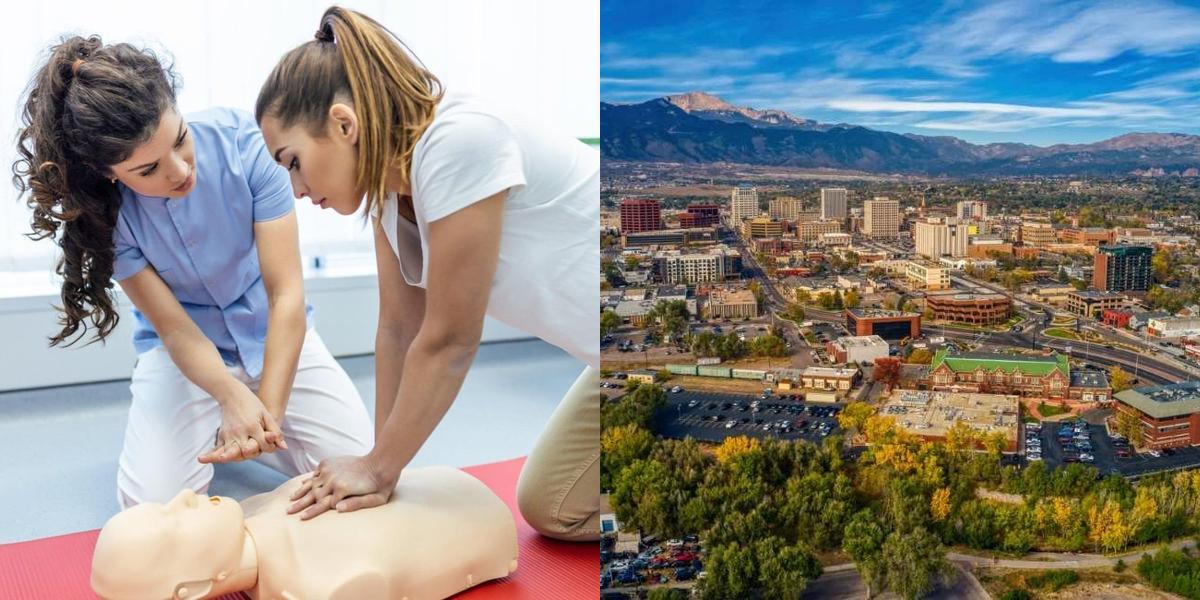How to become an EMT in Colorado

Emergency Medical Technicians (EMTs) play a crucial role in providing immediate medical care to those in need. If you have a passion for helping others and want to pursue a career in the healthcare field, becoming an EMT in Colorado might be the right path for you. In this blog post, we will cover the key points on how to become an EMT in Colorado.
Step 2: Create a professional resume and cover letter
When applying for EMT positions, it's important to have a professional resume and cover letter that highlight your skills, training, and experience. Be sure to include your EMT certification, any relevant work experience, and any additional certifications or specializations you may have. Tailor your resume and cover letter to each specific job application to demonstrate your interest and suitability for the position.
Step 3: Apply for EMT positions
Start searching for EMT job openings in your area through online job boards, hospital websites, and local EMS agencies. You can also reach out to local fire departments, ambulance services, and hospitals directly to inquire about any available positions. Be prepared to fill out applications, submit your resume and cover letter, and attend interviews.
Step 4: Prepare for interviews
Before attending interviews, take the time to research the organization you are applying to. Familiarize yourself with their mission, values, and services they provide. Prepare answers to common interview questions and be ready to discuss your training, experience, and why you are interested in working as an EMT. Dress professionally and arrive on time for the interview to make a good impression.
Step 5: Obtain additional certifications or specializations
To further enhance your job prospects as an EMT, consider obtaining additional certifications or specializations. For example, you could become certified in Advanced Cardiac Life Support (ACLS) or Pediatric Advanced Life Support (PALS), which would allow you to provide more advanced care in specific situations. These additional certifications can make you a more attractive candidate for certain job opportunities and may also lead to higher pay.
Career Paths and Opportunities after Becoming an Emergency Medical Technician
Becoming an Emergency Medical Technician (EMT) opens up a variety of career paths and opportunities within the field of emergency medical services. Here are some of the potential career paths you can pursue after becoming an EMT.
1. Paramedic
Many EMTs choose to further their education and become paramedics. Paramedics have a higher level of training and are able to provide more advanced medical care, such as administering medications and performing advanced life support interventions. Becoming a paramedic typically requires completing an additional training program and passing a certification exam.
2. Firefighter
EMTs often work alongside firefighters, and many firefighters are also certified EMTs. If you are interested in firefighting as well as emergency medical care, becoming a firefighter may be a natural progression for you. Firefighters respond to a wide range of emergencies, including medical emergencies, fires, and natural disasters.
3. Flight Paramedic
Flight paramedics provide emergency medical care to patients being transported by air ambulance. This career path requires additional training and certification, as well as the ability to work in high-stress and demanding situations. Flight paramedics often work in rural or remote areas, where access to medical care may be limited.
4. Emergency Room Technician
EMTs can also find employment in hospital emergency rooms as emergency room technicians. In this role, you would assist doctors and nurses in providing care to patients in the emergency department. This can be a fast-paced and dynamic environment, offering opportunities to work with a diverse range of patients and medical conditions.
5. Dispatch Operator
If you prefer a behind-the-scenes role, you may consider a career as a dispatch operator. Dispatch operators are responsible for receiving emergency calls, gathering information, and coordinating the appropriate response. This role requires excellent communication skills and the ability to stay calm under pressure.
6. EMS Instructor
If you have a passion for teaching and sharing your knowledge with others, you may consider becoming an EMS instructor. EMS instructors teach and train aspiring EMTs and paramedics, helping to shape the next generation of emergency medical professionals. This career path often requires additional education and certification.
These are just a few of the many career paths and opportunities available to EMTs. Depending on your interests and goals, you may choose to specialize in a specific area or pursue additional certifications to expand your skill set.
Final Thoughts
Becoming an Emergency Medical Technician is a challenging yet rewarding career choice. The process of obtaining your EMT certification requires dedication, hard work, and a genuine passion for helping others. Once you have obtained your certification, the opportunities for career growth and advancement are plentiful.
Whether you choose to continue your education and become a paramedic, pursue a career in firefighting, or specialize in a specific area of emergency medical care, the skills and knowledge you gain as an EMT will serve as a strong foundation for your future career endeavors.
Remember, the field of emergency medical services is constantly evolving, and there are always opportunities to further your education, gain new certifications, and expand your skill set. Stay committed to lifelong learning and professional development to ensure that you continue to provide the highest level of care to your patients.
If you are interested in becoming an EMT in Colorado, check out the Colorado Department of Public Health and Environment's website for information on training programs, certification requirements, and job opportunities in the state. Good luck on your journey to becoming an Emergency Medical Technician!
If you're thinking of a new career path, Dreambound offers in-depth guides to understand various job choices:

Athena is Co-founder and CEO of Dreambound.



